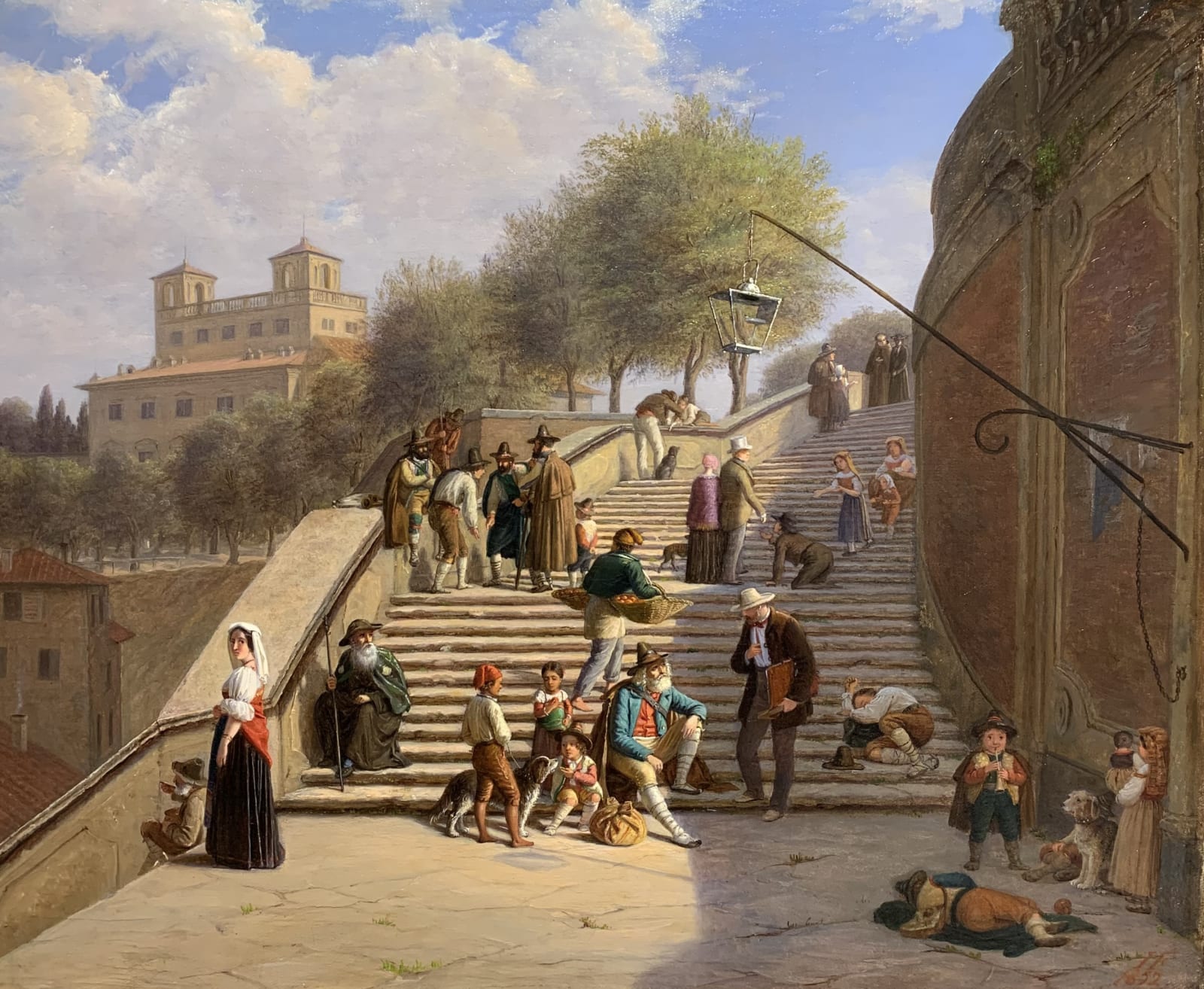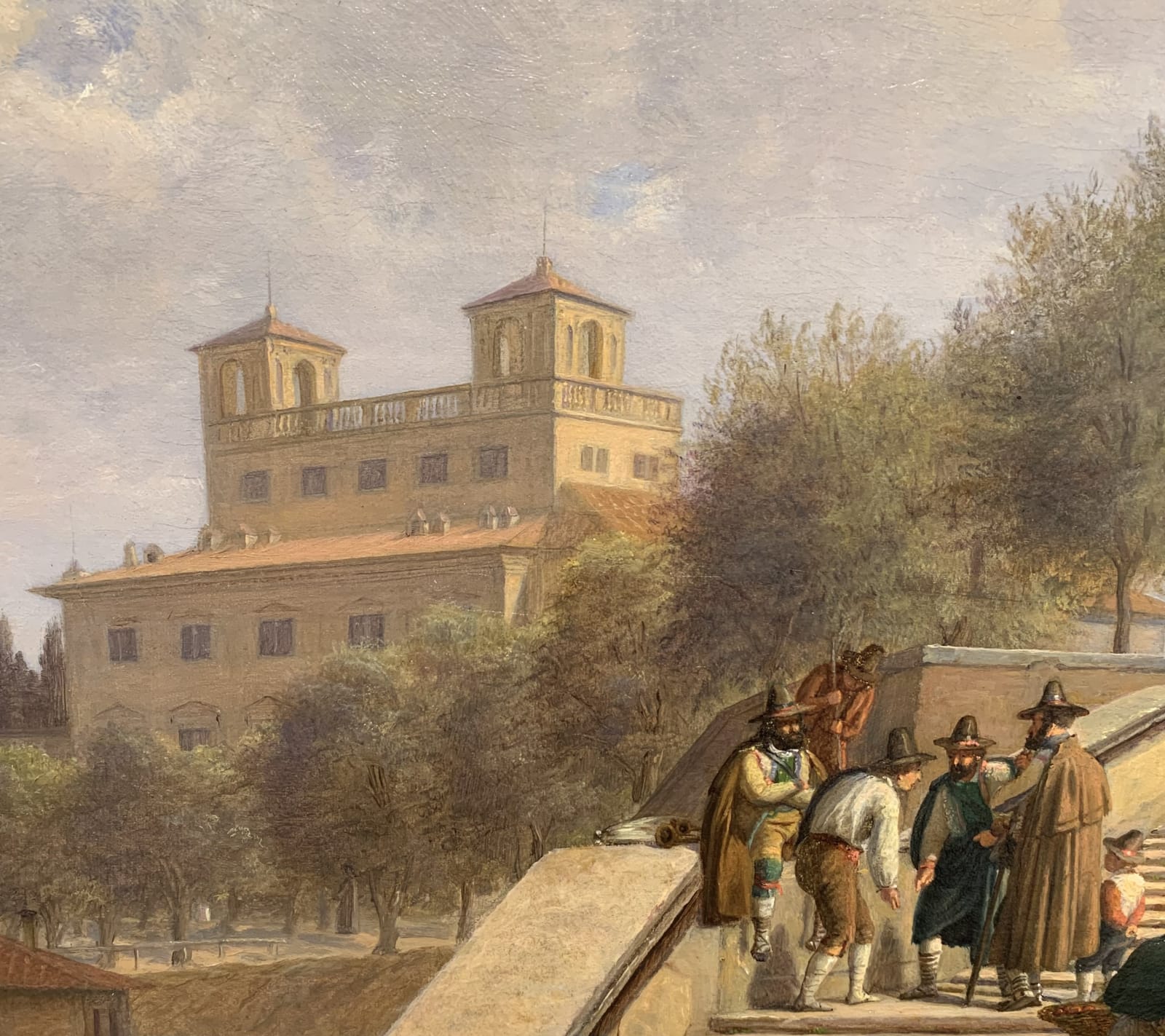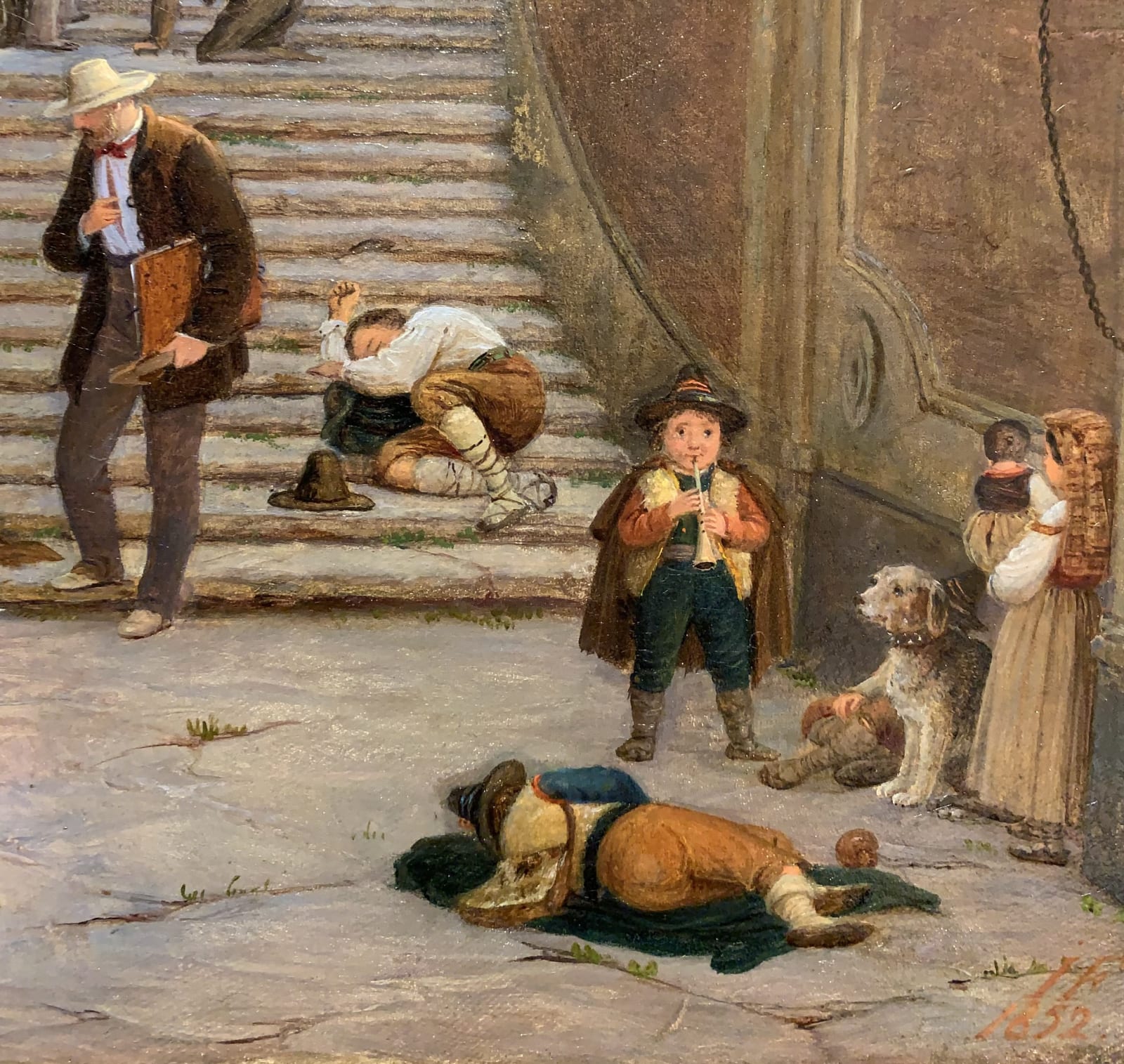Julius FRIEDLÆNDER
Further images
Our painting is a version of the renowned ‘View of the Spanish Steps’ by Friedlænder, held at the Statens Museum for Kunst in Copenhagen.
This work is undoubtedly one of the most famous depictions of Rome by the Danish painter, who created several replicas with variations for his numerous wealthy patrons, eager to have a souvenir of their Roman Grand Tour.
The painting depicts the final stretch of the staircase leading to the Trinità dei Monti church, with Villa Medici in the background, populated by figures that collectively represent a summa of the characters inhabiting the Eternal City and the paintings that portray its beauty: from elegant tourists to beggars, a young piper, players of morra, a painter in search of models, pilgrims, a few friars, and various idlers — all gathered on the steps of the famous Roman staircase.
Our version features some variations compared to the one in Copenhagen. In addition to being slightly smaller, it includes a crouching beggar on the steps and a girl among the group of central figures. These, along with other differences reflect Friedlænder’s ongoing and meticulous compositional study, as he always sought to create new suggestions and atmospheres in his paintings.
Historically, the Spanish Steps have represented a crucial spot in Roman life, not only for tourism, but as a crossroads of daily life and a meeting place for people of all social classes.
Julius Friedlænder (Copenhagen, 1810-1861) studied at the Royal Academy of Fine Arts from 1823, winning silver medals in 1828 and 1829; he was a pupil of Eckersberg and J. L. Lund. He left for Paris in 1842 and stayed in Rome from 1843 to 1845. He regularly exhibited at the annual Charlottenborg exhibition, particularly showcasing genre paintings and portraits; as a young artist, some of his works were acquired by the Galleria Reale.
JOIN OUR MAILING LIST
Subscribe to our mailing list in order to receive news on new acquisitions, exhibitions, special previews and more!
* denotes required fields
We will process the personal data you have supplied to communicate with you in accordance with our Privacy Policy. You can unsubscribe or change your preferences at any time by clicking the link in our emails.





